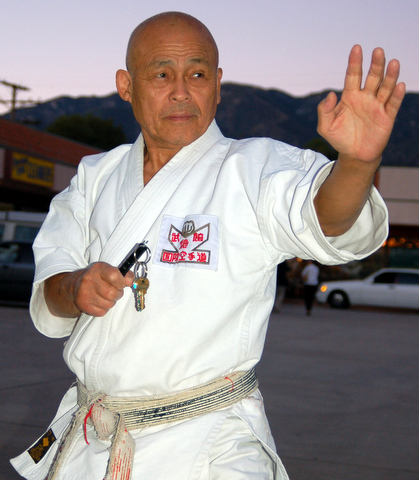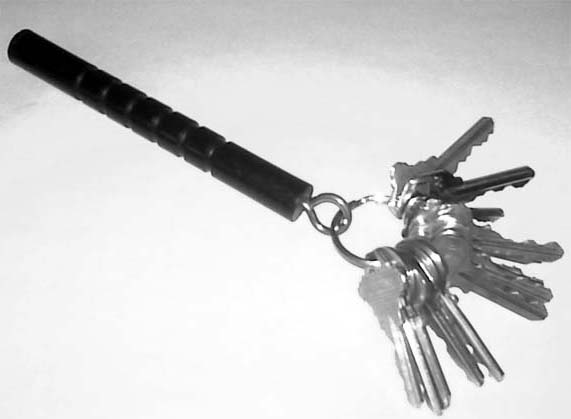The Kubotan was invented by former Japanese police officer and martial arts instructor Takayuki Kubota. In the late 1970’s, Kubota was teaching self-defense to officers of the Los Angeles Police Department when he developed this pocket stick as an aid to empty-hand suspect control.
The Kubotan, a registered trademark of Kubota, added a tool for officers to use in manipulating pressure points, applying joint locks, and effecting strikes. Past generations of policemen carried the Kubotan as a key ring from their belts and pockets.
The original Kubotan was a lexan rod, which measured 5 ½” long by 5/8” in diameter. It had a key ring affixed to one end. “Kubotan” was taken from the words Kubota and baton.
This simple less lethal weapon is not often seen these days. Trends toward the stand-off control of suspects, like pepper sprays, electronic control devices, and bean bag rounds, have supplanted more close quarter techniques.
In the beginning, the intent of the Kubotan was to bolster the effectiveness of small stature officers. However, in the hands of any officer, this tool can be very efficient.
Mr. Kubota crafted techniques with the stick that were based upon a suspect’s non-compliance with lawful commands by an officer or active physical resistance. The official techniques countered such things as passive resistance, grabs, punches, choke holds, bear hugs, and similar combative actions.
The Official Kubotan Techniques book, by Kubota and John G. Peters, contained only six basic movements and certain variations. These basic movements with the Kubotan led to handcuffing or immobilization of the suspect.
The Kubotan was directly envisioned with less lethal law enforcement use in mind. The Kubotan is not to be confused with the Okinawan yawara or Filipino tabak malit, both of which are pocket sticks with potential lethal intent in their applications. Kubotan techniques contain no life-threatening strikes or moves.
Many variations of the Kubotan are currently sold. They vary from plastic to aluminum to steel. They are inexpensive to buy and handy to have around, even just as key rings. Other items can be used as a Kubotan, the AA Mini MagLite being one of the most popular substitutes.
You can still get Kubotan training from Master Kubota himself at his Glendale, CA dojo. It’s not cheap, but it would be legendary.
If you are going to carry such a tool, get training and practice. The Kubotan may be decades old, but it won’t go empty or run out of batteries when you need it.
Randall



Pingback: Zebra F-701 Pen Review | ThinBlueFlorida.com